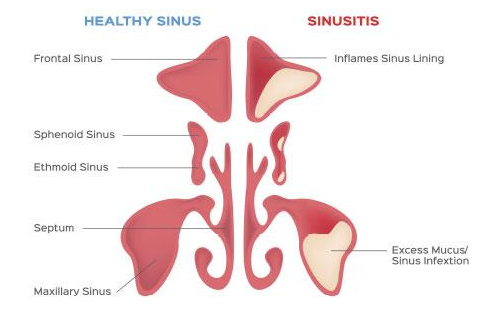Do I have a Deviated Septum?
There are many things that can cause a deviated septum, including a birth defect like a cleft lip or palate, or injury to the nose from being broken or from a previous medical procedure. So what are the signs that your septum may deviate? You may have this condition if you experience frequent nose bleeds, trouble breathing, congestion, headaches, sinus infections, post-nasal drip or facial pain.
If you have a severely deviated septum that causes nasal obstruction, it can lead to sleep disturbances due to difficulty breathing comfortably through your nose, dry mouth caused by excessive mouth breathing or pressure and congestion in your nasal airway.
Initial treatment of a deviated septum involves managing the symptoms with medication. Nasal decongestants can be an effective way to alleviate nasal congestion and help you breathe easier. Antihistamines may also be useful in treating any allergy symptoms you experience. In serious cases, a deviated septum can be repaired with a surgical procedure called a septoplasty, which involves cutting away damaged parts of the septum and realigning or removing them. Splints or packing are then used to keep the tissue in place during the healing process.
Sometimes a rhinoplasty procedure is done alongside a septoplasty to reshape the nose. Unlike a septoplasty, which doesn’t cause bruising or swelling afterward, rhinoplasty does. In fact, it’s normal to have bruising and swelling for up to two weeks after rhinoplasty.




Comments
Post a Comment